Austin roofing professionals can help you fix a leak in your roof, big or small. But when it comes to fixing leaks, you may wonder if your home insurance could cover the cost.
Read on to discover if home insurance covers leaks in your roof.
Do I Need Homeowners’ Insurance?
If you have a home, you’re generally required to have homeowners’ insurance, though that’s not always the case. However, if you finance your home, your lender will usually require you to acquire homeowners’ insurance to protect your home in case of any damage.
This is because the lender has a lien on the home. Basically, if you failed to pay your mortgage, the lender could legally foreclose on your home and take ownership of it. In other words, requiring homeowners’ insurance is a way for them to ensure the property value does not drop in case of a natural disaster.
Once you pay off your home, however, you are no longer required to keep homeowners’ insurance, though it is strongly recommended. You would hate to lose your home in an uncontrollable event.
What Does Homeowners’ Insurance Cover?
While not all homeowners’ insurance plans are the same, you can typically expect these insurance packages to cover:
- Your home (called a “dwelling”)
- Other structures on your lot
- Any personal property
- Liability
The most common coverage for homeowners’ insurance covers damages from fires, windstorms, hail, and lightning strikes. Typically, these plans do not cover natural disasters such as earthquakes or floods. Instead, you would need earthquake insurance or flood insurance.

Dwelling Protection
Referred to as “Dwelling Protection” or “Home Structure,” this part of your insurance policy protects your home itself from physical damages. Your walls and roof are included in this protection, and may also include your garage, if it’s attached to your home.
Dwelling Protection covers losses from:
- Smoke and fire
- Lightning
- Hail
- Wind
- Theft
- Vandalism
In the end, homeowners’ insurance companies only cover what they classify as “perils,” or events that may damage your home and property.
This usually includes damage due to smoke, fire, lightning, hail, windstorms, theft, vandalism, explosions, falling objects such as trees, ice, snow, or sleet, water damage, and damage from a vehicle or aircraft. However, check with your insurance company to be sure of what is covered within your policy.
Homeowners’ insurance companies only cover what they classify as “perils,” or events that may damage your home and property.

Other Structures
Your insurance policy will likely include coverage for other structures on your property. “Other structures” are classified as structures on your lot that are not attached to your home, such as a garage, shed, or fencing.
In order to be eligible, the damage must have resulted from a risk covered by your policy, typically referred to as “perils.”
In general, these are some examples of other structures covered under homeowners’ insurance:
- Fences
- Detached garages
- Gazebos
- Decks
- In-ground swimming pools
Some policies may offer “other structures” coverage as a percentage of your home structure coverage.
For example, say you have $300,000 in home structure coverage. Thus, your insurance company allows $30,000 in coverage for your other structures.
Adding new structures to your home? Check your insurance policy first to ensure they’ll be protected.
Your insurance policy may offer other structures coverage at a percentage of your dwelling coverage.
Personal Property
This piece of your insurance policy protects your possessions inside your home and other structures on your lot. Yes, this includes items you keep in your garage, shed, or “other structures” as defined in your “other structures” protection. So no matter where you keep your items, they are protected.
The same conditions apply here; the damage must have been caused by a peril, such as a fire, hail, windstorm, or similar event.
Personal property is considered to be items such as:
- Furniture
- Clothing
- Electronics
- Jewelry
There are 2 types of personal property coverage: reimbursement and payment.
- Reimbursement – In this case, your insurance company will reimburse you for the costs associated with replacing items.
- Payment – In this case, your insurance company pays for the actual cash value of the items.

If the price has gone up on an item you bought long ago, don’t worry – your insurance company should pay you the cost for replacing this item at its current value today.
However, similarly, if the price has gone down, they will only reimburse you for the cost of replacing the item at current value. In both cases, your reimbursement or payment will be based on current cash value of the items in question.
Note that insurance policies usually do not cover misplaced items — only items damaged or lost due to perils. However, adding on “scheduled personal property protection” may serve that purpose, if needed.
Make sure you double-check with your insurance company to see what exactly is covered and what isn’t. Many policies restrict items coverage based on value, meaning that your items must be worth a certain amount before providing coverage for them.

Liability
The final piece of homeowners’ insurance is liability coverage. This protects you when someone who isn’t a resident in your home gets hurt while on your property.
An example of a covered event would be when someone trips when navigating down your broken porch steps or staircase.
This covers legal expenses related to the incident or the victim’s medical bills if you’re found to be at fault.
Does Homeowners’ Insurance Cover Austin Roofing Leaks?
Most homeowners’ insurance policies cover roof damage, if it was caused by perils, such as windstorms, hail, lightning, smoke or fire, a fallen tree, theft, or vandalism.
This will cover your costs of replacing your roof or roof repairs. Your other structures coverage should cover the costs of roofs on any unattached structures.
Note that you must pay a deductible before homeowners’ insurance will cover repair or replacement of a damaged roof.
For leaks specifically, the same rules apply. The leak must have been caused by a peril such as vandalism, theft, fire, hail, lightning, or a similar event. In other words, it must be sudden, accidental damage – not due to a lack of maintenance or simply old age. Remember: if your roof is 20 years old or older, it’s time to replace it.
Call Bluebonnet Roofing for Expert Austin Roofing Services!
For the best in the Austin roofing business, contact Bluebonnet Roofing today. Simply call us at 512-580-9063 or contact us online by clicking the button below.
Does home insurance cover roof leaks? | Bluebonnet Roofing – Austin, TX









